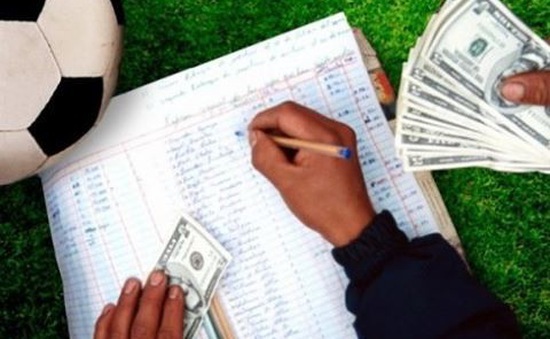|
|
Predicting corner kicks accurately in football matches requires a combination of analysis, research, and understanding of various factors that influence corner kick occurrences. Here are instructions on how to predict corner kicks accurately based on expert advice, Let's join the reputable bookmaker wintips midnight football prediction
Study Team Playing Styles: Different teams have distinct playing styles that affect their likelihood of winning corner kicks. Teams that prefer attacking down the flanks or utilize wingers tend to win more corner kicks as they attempt crosses into the penalty area. Analyze the playing style of each team to assess their corner kick potential.

Evaluate Team Form and Tactics: Consider the current form of each team and their tactical approach to the match. Teams with offensive tactics and a focus on ball possession are more likely to dominate the game and win corner kicks. Conversely, defensive teams may concede more corner kicks as they prioritize defending.
Assess Match Conditions: Match conditions such as weather, pitch conditions, and stadium characteristics can influence corner kick frequency. For example, windy conditions may lead to more inaccurate clearances, resulting in corner kicks. Evaluate how match conditions may affect the gameplay and subsequently the number of corner kicks.
Analyze Set-Piece Specialists: Identify teams or players known for their proficiency in set-pieces, including corner kicks. Teams with skilled set-piece takers or tall players capable of winning aerial duels are more likely to create scoring opportunities from corner kicks. Pay attention to set-piece specialists when predicting corner kick outcomes.
Review Historical Data: Analyze historical data of past matches involving the teams to assess their corner kick statistics. Look for patterns or trends in corner kick frequency, particularly in head-to-head matchups. Historical data can provide valuable insights into teams' corner kick tendencies and help inform your predictions.
Consider Match Importance and Motivation: The significance of the match and teams' motivation can influence their gameplay and aggressiveness. High-stakes matches or games involving teams fighting for promotion, relegation, or titles may see increased intensity and attacking play, leading to more corner kicks.
Monitor In-Game Statistics: During the match, track in-game statistics such as possession, shots on target, and attacking opportunities. Teams with higher possession and shot attempts are more likely to win corner kicks as they apply pressure on the opposing defense. Use real-time statistics to adjust your predictions accordingly.
Utilize Advanced Metrics and Models: Explore advanced metrics and statistical models designed to predict corner kick outcomes. Metrics such as expected goals (xG) and expected assists (xA) can provide insights into teams' attacking potency and likelihood of winning corner kicks. Consider incorporating advanced metrics into your analysis for more accurate predictions.
Watch Pre-Match Analysis and Insights: Follow pre-match analysis and insights provided by football experts, pundits, and analysts. They often offer valuable information on teams' tactics, key players, and potential corner kick opportunities based on their in-depth knowledge of the game. Please join bookmaker wintips to refer to the reputable asian bookies dropping odds
Stay Informed and Adapt: Stay updated with the latest football news, injuries, suspensions, and lineup changes leading up to the match. Adjust your predictions based on any new information that may impact the game dynamics and corner kick occurrences.
Practice and Refine Your Analysis: Continuously practice and refine your corner kick prediction skills by analyzing past matches, experimenting with different prediction methods, and learning from your successes and failures. Over time, you'll develop a better understanding of how various factors influence corner kick outcomes and improve your prediction accuracy.
Study Team Playing Styles: Different teams employ varied tactics and playing styles that can influence the frequency of corner kicks they win or concede. Teams that favor attacking football often press high and create more opportunities in the opponent's half, increasing the likelihood of winning corners. Conversely, defensively oriented teams may concede fewer corners but also struggle to win them.
Assess Set-Piece Specialists: Identify teams or players known for their proficiency in set-piece situations, including corner kicks. Some teams may have designated set-piece takers who excel at delivering accurate crosses into the box or scoring from corners. Analyze their past performance and statistics related to corner kicks to gauge their impact on the team's corner kick opportunities. Join now at the reputable the best dropping odds free betting tips of our bookmaker wintips
Consider Match Dynamics: Factors such as the scoreline, time remaining, and team tactics can influence the frequency of corner kicks in a match. Teams trailing in a game often push forward aggressively, increasing their chances of winning corners as they seek to equalize or score a late winner. Conversely, teams leading may adopt a more defensive approach, conceding fewer corners but potentially winning some on the counter-attack.
Track Historical Data: Review past match data and statistics to identify trends in corner kick frequency for specific teams or leagues. Look for patterns in teams' corner kick performance based on factors such as home or away fixtures, opponent strength, and playing surface (e.g., grass vs. Artificial turf). Historical data can provide valuable insights into teams' tendencies and help inform your corner kick predictions.
By incorporating these additional instructions into your corner kick prediction process, you can enhance your ability to accurately forecast corner kick outcomes in football matches. Remember to leverage a combination of qualitative analysis, statistical metrics, and real-time match data to make informed predictions and maximize your success in corner kick betting.
|
|

 |Archiver|手机版|小黑屋|打工e族
( 鲁ICP备2021044221号 )
|Archiver|手机版|小黑屋|打工e族
( 鲁ICP备2021044221号 )